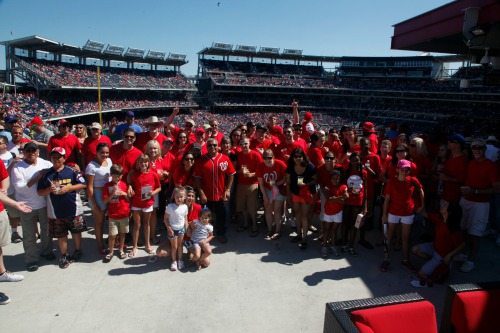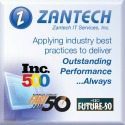
In the competitive government contracting industry, two things are certain: The technological landscape will continue to shift rapidly, and those who can adapt the fastest will have the advantage. According to Moe Jafari of Human Touch, Platform-as-a-Service (PaaS) is the missing link companies need to keep pace with evolving technologies.
Moe is the Founder, President and CEO of HumanTouch, LLC, a global leader in developing solutions that maximize visibility and strategic insight into business operations. The company is based in McLean, Virginia and supports both government and commercial organizations. Moe defines PaaS as “the utilization of an environment that stays up and running and allows you to quickly build applications, develop analytics, and utilize the data you have in an easy and configurable environment rather than a customizable environment.”
If you aren’t yet familiar with PaaS, you will be soon, as the industry is ripe for this new way of managing IT. According to Moe, HumanTouch is ready for the transition.
“Many organizations are already using Software as a Service (SaaS) and Infrastructure as a Service (IaaS). If you’re looking for a new tech capability and you can’t spend time developing it in-house, you turn to SaaS to acquire and implement it quickly. If you want seven servers right away, this is where IaaS steps in. Think of PaaS, then, as the mortar that holds SaaS and IaaS together. With PaaS, platforms are brought into an organization immediately, to accelerate application delivery. They arrive pre-tested, with the ability to scale on demand. This means you won’t launch a project and undergo laborious steps to bring in the platforms needed to make it work. I believe that PaaS represents a major shift with regard to the building, deploying and improving of applications while increasing the speed of systems changes.”
The dichotomy present in the contracting industry, where there are government-mandated absolutes operating within the flux of regulatory changes, make the industry the perfect proving ground for PaaS. “Currently, the industry is one of the fastest growing for PaaS,” said Jafari. “I think the adoption is a little slower than what we would like, but it will soon go through the roof because of the different budgetary constraints that most agencies, as well as most companies, have. They just don’t have the time, the money or the energy to wait 24 months to get a system up and running — especially in our field – but, we can get it done in 24 days.”
Not only is PaaS primed to change IT services, but it’s also positioned to change entire business models in the industry. “Right now the IT services industry is based upon the number of hours billed, based upon how large the system is,” said Jafari. “Integrators feel no pressure to finish their jobs faster. No, they really don’t. Agencies have their own set of procurement timelines in place. Once they are determined, that dictates the schedule. Sure, everyone talks the talk about “faster, better, cheaper,” but most aren’t walking it. There aren’t any incentives for IT contractors to push projects ahead of schedule. So they won’t.
That’s where PaaS comes in. It’s not based upon how many people you have billing, but upon the products you provide and whether you are able to provide the full solution to what an organization needs. And, when the business and laws change, you can make the necessary changes to the system alongside of them. That’s where we see Human Touch playing a major role in it.”
We asked Moe how HumanTouch is specifically working with government clients to implement PaaS, as well as how IT departments can make the transition to a PaaS environment.
“Some government organizations that have already embraced PaaS have brought in traditional contractors who were locking down those same platforms in a very traditional way. So, the agencies would have to bring the contractors back to access their own data that they own,” Jafari said. “What we’ve done is built a completely separate environment where we open up our tools and toolsets and allow our customers to communicate and to make necessary changes themselves.”
This set-up works better for the government organizations, according to Jafari, because federal laws and the administration as a whole change on a regular basis. “Along with these changes come new initiatives, which means the agency has to be very nimble,” said Jafari. “And these are not small organizations — they’re very large, so being nimble is a big challenge.”
PaaS affords organizations, big and small, the nimble approach they need to meet challenges successfully. “Having a toolset within a platform that allows them to change their workflow, or to change based upon initiatives that are being headed up by the White House, keeps them very nimble and allows them to be able to do things rather quickly in days and weeks, as opposed to months and years.”
Even though PaaS has a lot to offer, providers like HumanTouch must operate within a unique set of constraints. According to Jafari, the most pressing concern of customers is keeping their data secure, especially since many of these customers are working with extremely sensitive information. “We always see the civilian agencies being much more adept at making some of those changes before our DoD customers. However, the DoD has been very efficient in looking at their systems and gauging which ones could be utilized in a multi-tenet government pod environment; instead of keeping systems locked behind our firewall, for example, they can stay behind a government firewall.”
“Between the budget constraints and the next generation coming into the workforce, organizations are becoming much more adept at understanding where everything is and much more comfortable at where the data is on a PaaS platform,” said Jafari.

At the end of the day, the organizations that thrive will be the ones that continue to innovate. It’s no wonder that even the most security-sensitive agencies are coming around to the idea of services like PaaS.
One way that HumanTouch is nurturing its own innovative process is by participating in the Open Innovators Toolkit, a federal initiative aimed at making government smarter and more responsive to private sector demands by leveraging citizen expertise.
We just opened up what we call the “AppX,” which is an application exchange similar to what most people have on their smartphones, said Jafari. “Our vision is that this application exchange will allow government agencies and clients to utilize tools very similar to the way they use apps on their phone. What we’re looking to do is build a toolkit that delivers our clients the capabilities they need today, as opposed to waiting until tomorrow for it.”
Innovation and growth aren’t always easy, though. I asked Moe to describe some of the growing pains he’s experienced in his own career and how they have shaped him into who he is today. “All the pain – even though when I was going through it, I didn’t like it — has resulted in great growth experiences for me,” he said. “Sometimes it’s taken me a year or even two years to look back at some of the challenges I’ve faced to recognize that those challenges were just getting me ready for something bigger. I look back now and feel entirely blessed.”
When he’s not busy providing IT services to government and commercial clients, you can usually find Moe just trying to keep up with his active family and carpooling to various sporting activities with his kids. “I try to clean my car of all the hockey equipment and the smell,” he joked. “That’s pretty much my free time. I have three great kids including a beautiful, lovely daughter and two boys that, between their hobbies and equipment—one is into baseball and the other lacrosse—my car doesn’t smell so nice, so I spend a lot of time cleaning!”
Moe does find time for some fun outside of carpooling and cleaning, though. “We’re a huge hockey family,” he explained. “We’re avid Caps fans, so we’re at a lot of the Caps games together; it’s a great time to unwind and cheer for the home team.”


